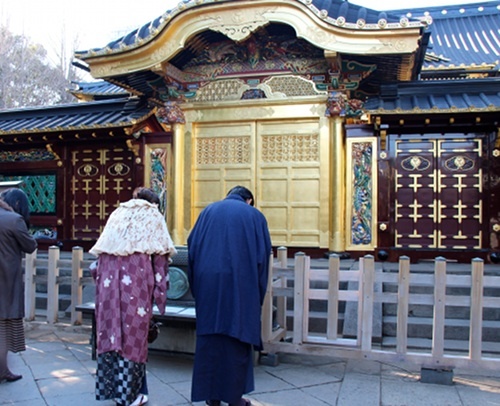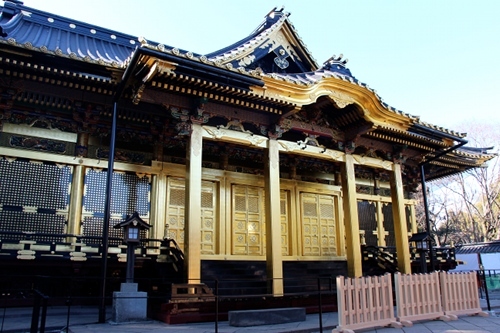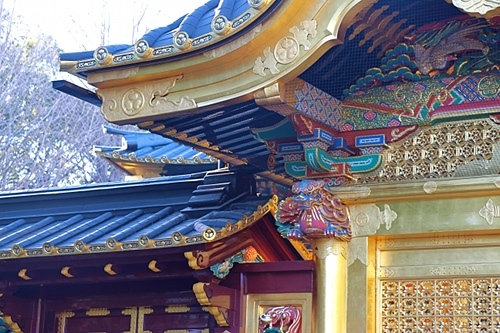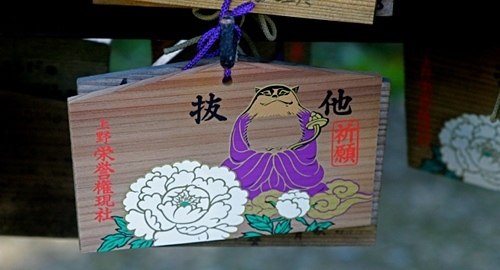After a six-year facelift and one-hundred thousand sheets of gold leaf, Toshogu Shrine in Ueno Park is finally open again. Given its history, Toshogu should actually be spelled i-r-o-n-y.
The ornately carved and gilded hall was built in the 1600s to enshrine super shogun Tokugawa Ieyasu.
Under Ieyasu's leadership, the Tokugawa came to power in a bloody war seizing totalitarian control of the nation from the emperor and placing it in the sword-wielding hands of the samurai. Something of a control freak, he made sure his power would live on by having himself elevated to a deity after his death.
Cut to three hundred years later and the warriors of the Tokugawa Shogunate made their last stand here in Ueno against the forces of the Meiji reformers. The revolutionairies were determined to overthrow the Shogunate, usher in a more modern age, and put the emperor back on top.
Ueno was not a park then. Public parks didn't exist in Japan. The area was full of shrines and temples and big courtyards perfect for sword and musket fights between the opposing forces. There was a lot of blood and fire and what buildings didn't burn early in the battle were smashed to splinters by modern canon brought in by the Meiji forces.
And therein lies the irony.
Ieyasu's shrine to himself and the mighty samurai class, Toshogu, was one of only a tiny number of buildings in the area that managed to survive this fierce final battle. So in-your-face reformers! Don't mess with this Shogun, even in death.
The real splendor of Ueno Toshogu's gate and main hall is hidden behind the high, ornately decorated fence. Beauty that costs 500 yen ($5) to get a closer look at. Though you can peer through slats in the fence, the ornate brightly-colored carving that is a feature of Toshogu is only visible on the other side. It's worth the price.
If you choose to go inside, the path passes a tiny shrine. Stop and look closely inside. There's a little tanuki, raccoon dog, statue. Tokugawa Ieyasu was a crafty sort of fellow. In Japanese folklore, tanuki are shapeshifting, lying, cheating, stealing creatures who can't be trusted. Ieyasu's nickname -- not to his face maybe -- was 'Tanuki'.
The most popular ema, wooden votive tablet, for sale at the temple is an extremely smug looking tanuki in purple robes. That sly creature on the ema is actually a tongue-in-cheek version of Tokugawa Ieyasu. The lotus and priests robes symbolize his bought-and-paid-for ascension to the heavenly pantheon.
Looks like the Shinto priests had the last laugh.
Access: Open daily until dusk. Ueno Station. Take the 'Koen' or Park exit. Cross the street and bear to the right along the main walkway that goes between the museums on your right and concert hall on the left. Walk straight along the broad boulevard until you come to the Police Box on the right by two coffee houses. Bear to the left - straight ahead is the zoo - almost immediately you'll see a stone torii gate. Go through and along the path lined with stone lanterns leading to the shrine.




